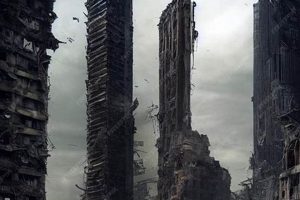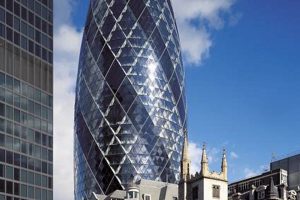A skyscraper review is a comprehensive analysis of a tall building, typically focusing on its architectural design, engineering, and overall impact on the surrounding cityscape. It involves a thorough examination of the building’s exterior and interior, as well as its historical and cultural significance.
Skyscraper reviews play a crucial role in the field of architecture and urban planning. They provide valuable insights into the design and construction of tall buildings, showcasing innovative approaches and best practices. By highlighting the strengths and weaknesses of different skyscrapers, reviews help architects, engineers, and developers refine their designs and create more sustainable, functional, and aesthetically pleasing structures.
In addition to their practical value, skyscraper reviews also serve as a form of architectural criticism, shaping public perception and influencing the future development of tall buildings. They can spark discussions about the impact of skyscrapers on urban environments, sustainability, and the overall quality of life in cities.
1. Architectural Design
Architectural design plays a pivotal role in shaping the overall quality and impact of a skyscraper. In a skyscraper review, the evaluation of architectural design encompasses several key aspects:
- Form and Aesthetics: The building’s exterior form and overall appearance are crucial elements of a skyscraper review. Reviewers examine the building’s silhouette, proportions, and the interplay of different architectural elements to assess its visual appeal and iconic status. The aesthetic qualities of the building’s facade, including materials, textures, and color schemes, are also analyzed to determine their contribution to the building’s overall design concept.
- Functionality: The functional aspects of a skyscraper’s design are equally important in a review. Reviewers consider the building’s layout, space planning, and circulation patterns to evaluate its suitability for its intended use. They assess the efficiency of the building’s floor plans, the adequacy of natural light and ventilation, and the overall comfort and well-being of occupants.
- Integration with Surroundings: Skyscrapers are often prominent landmarks in their urban context. A skyscraper review examines how the building relates to its surroundings, including neighboring structures, public spaces, and the overall cityscape. Reviewers evaluate the building’s contribution to the urban fabric, its impact on pedestrian experience, and its potential to create or enhance public spaces.
- Sustainability: In recent years, sustainability has become an increasingly important aspect of skyscraper design. Reviewers assess the building’s environmental performance, including energy efficiency, water conservation, and the use of sustainable materials. They evaluate the building’s adherence to green building standards and its potential to contribute to the overall sustainability of the urban environment.
By carefully considering these aspects of architectural design, skyscraper reviews provide valuable insights into the creative vision and technical expertise behind tall buildings. They contribute to the advancement of architectural discourse, inform decision-making processes, and ultimately shape the future of skyscraper design.
2. Engineering
Engineering plays a crucial role in the design and construction of skyscrapers. Structural systems, materials, and innovative construction techniques are essential components of a skyscraper review, as they determine the building’s stability, safety, and overall performance.
Reviewers assess the building’s structural system, which includes the framework and load-bearing elements that support the building’s weight and resist lateral forces such as wind and earthquakes. They evaluate the use of innovative materials, such as high-strength concrete and composite materials, which can reduce the weight of the building and improve its structural integrity.
Innovative construction techniques, such as prefabrication and modular construction, are also considered in a skyscraper review. These techniques can improve construction efficiency, reduce costs, and minimize the environmental impact of the building.
By carefully examining the engineering aspects of a skyscraper, reviewers can provide valuable insights into the building’s structural soundness, safety, and overall performance. This information is essential for architects, engineers, and developers to improve the design and construction of future skyscrapers.
3. Sustainability
Sustainability has emerged as a critical aspect of skyscraper design and construction, and it plays a significant role in skyscraper reviews. Reviewers assess the building’s energy efficiency, environmental impact, and adherence to green building practices to evaluate its overall sustainability performance.
In terms of energy efficiency, reviewers examine the building’s design strategies, such as the use of natural light, passive ventilation, and efficient lighting systems. They also consider the building’s energy consumption data and its compliance with energy codes and standards.
The environmental impact of a skyscraper is another important factor in a review. Reviewers assess the building’s carbon footprint, water usage, and waste management practices. They also consider the use of sustainable materials and the building’s potential to contribute to the overall sustainability of the urban environment.
Green building practices encompass a range of strategies that promote sustainability in the design, construction, and operation of buildings. Reviewers evaluate the building’s adherence to green building standards, such as LEED or BREEAM, and its incorporation of sustainable features, such as rainwater harvesting systems, solar panels, and green roofs.
By carefully considering the sustainability aspects of a skyscraper, reviewers provide valuable insights into the building’s environmental performance and its contribution to sustainable urban development. This information is essential for architects, engineers, and developers to make informed decisions about the design and construction of future skyscrapers.
4. Functionality
Functionality is a critical aspect of skyscraper design, as it directly impacts the building’s suitability for its intended use, the efficiency of its spaces, and the overall com
fort and well-being of its occupants. In a skyscraper review, functionality is assessed through careful examination of the building’s layout, space planning, and amenities.
Reviewers consider the building’s overall program and how well the design accommodates the specific needs of its intended users. They evaluate the efficiency of the building’s floor plans, the adequacy of circulation spaces, and the provision of natural light and ventilation. Occupant comfort is also a key concern, as reviewers assess factors such as thermal comfort, acoustic privacy, and indoor air quality.
For example, in a skyscraper designed for office use, reviewers would assess the efficiency of the floor plates, the provision of meeting rooms and collaboration spaces, and the overall flexibility of the layout to accommodate different types of work activities. In a residential skyscraper, reviewers would evaluate the building’s unit mix, the efficiency of the kitchens and bathrooms, and the provision of amenities such as fitness centers and outdoor spaces.
Understanding the connection between functionality and skyscraper review is essential for architects and developers to create buildings that are not only visually appealing but also highly functional and comfortable for their occupants. By carefully considering the functionality of a skyscraper, reviewers can provide valuable insights into the building’s overall performance and its ability to meet the needs of its intended users.
5. Urban Impact
In the context of skyscraper review, urban impact refers to the relationship between a skyscraper and its surrounding environment, including public spaces and transportation. This aspect of a skyscraper review assesses how the building integrates with the urban fabric, contributes to the cityscape, and affects the overall quality of life for people in the area.
- Integration with the Urban Fabric: Reviewers examine how the skyscraper connects with the surrounding buildings, streets, and public spaces. They evaluate whether the building respects the scale and character of the neighborhood, creates inviting and accessible public spaces, and contributes to the overall walkability and vitality of the area.
- Contribution to the Cityscape: Skyscrapers can become iconic landmarks and shape the identity of a city. Reviewers assess the building’s architectural significance, its contribution to the city’s skyline, and its potential to become a destination or gathering place for people.
- Transportation Accessibility: The location and design of a skyscraper can significantly impact transportation patterns and accessibility. Reviewers evaluate the building’s proximity to public transportation, the provision of parking facilities, and the potential impact on traffic congestion in the area.
- Impact on Public Spaces: Skyscrapers can create or enhance public spaces at their base or in their vicinity. Reviewers assess the quality of these spaces, their accessibility to the public, and their contribution to the overall livability of the area.
Understanding the urban impact of a skyscraper is crucial for architects, developers, and city planners to create buildings that are not only visually appealing but also contribute positively to the surrounding environment and the well-being of the community.
6. Historical Context
In a skyscraper review, historical context plays a significant role in understanding the building’s design, significance, and impact. By examining the building’s architectural style, cultural influences, and place in the history of tall buildings, reviewers can provide a deeper appreciation of the building’s unique characteristics and its contribution to the evolution of skyscraper design.
The architectural style of a skyscraper is often influenced by the prevailing design trends and technologies of its time. Reviewers analyze the building’s form, facade, and ornamentation to identify its stylistic influences. They may compare the building to other skyscrapers of the same era to highlight its similarities and differences, and to assess its originality and innovation.
Cultural significance is another important aspect of historical context. Skyscrapers can reflect the aspirations, values, and technological advancements of the society in which they are built. Reviewers examine the building’s relationship to the surrounding urban environment and its impact on the city’s identity and culture. They may also consider the building’s use and occupancy over time, and how it has adapted to changing social and economic conditions.
Finally, reviewers assess the building’s place in the history of tall buildings. They may trace the evolution of skyscraper design from its early beginnings to the present day, highlighting key milestones and technological breakthroughs. By understanding the building’s historical context, reviewers can provide insights into its design, construction, and overall significance as a landmark in the history of architecture and engineering.
In conclusion, historical context is an essential component of skyscraper review, as it provides a deeper understanding of the building’s design, significance, and impact. By examining the building’s architectural style, cultural influences, and place in the history of tall buildings, reviewers can provide valuable insights into the evolution of skyscraper design and its contribution to the built environment.
7. Critical Analysis
Critical analysis is an essential component of skyscraper review, providing a comprehensive evaluation of the building’s design, construction, and impact. By examining the building’s strengths, weaknesses, and overall contribution to the field of architecture, reviewers offer valuable insights into the building’s significance and its place in the history of tall buildings.
- Design Innovation: Reviewers assess the building’s architectural design, evaluating its originality, creativity, and use of innovative materials and construction techniques. They may compare the building to other skyscrapers to highlight its unique features and its contribution to the advancement of architectural design.
- Structural and Engineering Excellence: The structural and engineering aspects of a skyscraper are crucial to its stability and safety. Reviewers examine the building’s structural system, materials, and construction methods to assess its resilience, durability, and overall performance. They may also consider the building’s response to environmental factors, such as wind and earthquakes.
- Functional Efficiency and Usability: Skyscrapers are designed to serve specific purposes, whether it be for office, residential, or mixed-use. Reviewers evaluate the building’s functionality, assessing its layout, space planning, and amenities to determine how well it meets the needs of its occupants and users. They may also consider the building’s adaptability and flexibility to accommodate changing needs over time.
- Sustainability and Environmental Impact: In recent years, sustainability has become an increasingly important factor in skyscrape
r design. Reviewers assess the building’s environmental performance, including its energy efficiency, water usage, and use of sustainable materials. They may also consider the building’s contribution to the overall sustainability of the urban environment.
By critically analyzing these key aspects of a skyscraper, reviewers provide a comprehensive assessment of the building’s overall contribution to the field of architecture. This analysis helps architects, engineers, and developers to learn from the successes and challenges of past projects, and to push the boundaries of skyscraper design in the future.
Frequently Asked Questions about Skyscraper Reviews
Skyscraper reviews provide valuable insights into the design, construction, and impact of tall buildings. Here are answers to some frequently asked questions about skyscraper reviews:
Question 1: What is the purpose of a skyscraper review?
Skyscraper reviews provide a comprehensive analysis of tall buildings, evaluating their architectural design, engineering, sustainability, functionality, urban impact, and historical context. They offer critical insights into the building’s strengths, weaknesses, and overall contribution to the field of architecture.
Question 2: Who conducts skyscraper reviews?
Skyscraper reviews are typically conducted by architectural critics, journalists, engineers, and other experts in the field of architecture. They have specialized knowledge and experience in evaluating tall buildings and providing informed opinions on their design and impact.
Question 3: What are the benefits of reading skyscraper reviews?
Skyscraper reviews offer numerous benefits. They can help architects, engineers, and developers improve the design and construction of future skyscrapers by providing valuable feedback on successful and unsuccessful approaches. Reviews also inform the general public about the latest trends and advancements in skyscraper design, fostering a greater appreciation for architecture and urban planning.
Question 4: How can I find skyscraper reviews?
Skyscraper reviews can be found in various sources, including architecture magazines, newspapers, online publications, and specialized websites. Many architectural firms and organizations also publish reviews of notable skyscraper projects on their websites.
Question 5: What should I look for in a skyscraper review?
When reading a skyscraper review, pay attention to the reviewer’s qualifications and expertise. Look for reviews that provide a balanced and objective assessment of the building, considering both its strengths and weaknesses. In-depth reviews often include detailed descriptions of the building’s design, construction, and impact on the surrounding environment.
Question 6: How can I use skyscraper reviews to inform my own design work?
Skyscraper reviews can be a valuable resource for architects and designers. By studying the successes and challenges of past projects, you can gain insights into innovative design approaches, sustainable practices, and effective urban integration strategies. Reviews can also help you stay abreast of the latest trends and advancements in skyscraper design, inspiring your own creative work.
Summary: Skyscraper reviews offer critical insights into the design, construction, and impact of tall buildings. They are conducted by experts in the field of architecture and provide valuable feedback for architects, engineers, and the general public. By reading skyscraper reviews, you can learn from past projects, stay informed about the latest trends, and gain inspiration for your own design work.
Transition to the next article section:
Skyscraper Review Tips
Skyscraper reviews provide valuable insights into the design, construction, and impact of tall buildings. By following these tips, you can conduct thorough and informative skyscraper reviews:
Tip 1: Establish Clear Criteria
Before starting your review, establish clear criteria for evaluating the skyscraper. Consider aspects such as architectural design, engineering, sustainability, functionality, urban impact, and historical context. This will ensure a structured and comprehensive review.
Tip 2: Conduct Thorough Research
Gather information from various sources, including architectural drawings, technical reports, and interviews with architects, engineers, and occupants. This research will provide a solid foundation for your analysis and evaluation.
Tip 3: Analyze the Design and Construction
Examine the building’s architectural design, structural system, and construction methods. Evaluate the use of innovative materials and technologies, as well as the building’s overall aesthetic appeal and functionality.
Tip 4: Assess the Urban Impact
Consider the building’s relationship to the surrounding environment, including its impact on public spaces, transportation, and the overall cityscape. Evaluate how the skyscraper contributes to the city’s identity and quality of life.
Tip 5: Evaluate the Sustainability Features
Analyze the building’s energy efficiency, water usage, and use of sustainable materials. Assess the building’s contribution to the overall sustainability of the urban environment.
Tip 6: Provide Critical Analysis
Offer a balanced and objective assessment of the skyscraper’s strengths and weaknesses. Highlight innovative design approaches, successful solutions, and areas for improvement. Provide constructive criticism to inform future skyscraper design and construction.
Tip 7: Support Your Arguments with Evidence
Use specific examples and data to support your arguments. Reference relevant studies, reports, and interviews to enhance the credibility of your review.
Tip 8: Seek Feedback and Revise
Share your draft review with colleagues or experts in the field for feedback. Be open to constructive criticism and revise your review accordingly. This will improve the quality and accuracy of your final review.
By following these tips, you can conduct comprehensive and insightful skyscraper reviews that contribute to the advancement of skyscraper design and urban planning.
Summary:
Skyscraper reviews play a crucial role in shaping the future of tall building design. By establishing clear criteria, conducting thorough research, and providing critical analysis, you can effectively evaluate skyscrapers and contribute to the discourse on sustainable, functional, and aesthetically pleasing tall buildings.
Skyscraper Review
Skyscraper reviews are essential tools for evaluating the design, construction, and impact of tall buildings. By providing critical analysis and informed insights, skyscraper reviews contribute to the advancement of architecture and urban planning. They highlight innovative approaches, successful solutions, and areas for improvement, shaping the future of skyscraper design and construction.
Skyscraper reviews assess a building’s architectural design, engineering, sustainability, functionality, urban impact, and historical context. They provide valuable feedback for architects, engineers, developers, and the general public, informing decision-making processes and promoting best practices. By understanding the strengths and weaknesses of past projects, we can learn from successes and challenges, pushing the boundaries of skyscraper design and creating more sustainable, functional, and aesthetically pleasing tall buildings.







